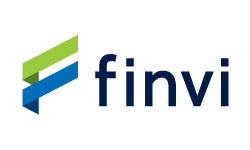Source: site

Consumers in August loaded up on revolving debt, a category that includes credit cards, as they reversed a slowdown, and in some cases, paydowns, on their balances.
New data released Monday (Sept. 8) by the Federal Reserve shows that, in July, consumer credit increased at a seasonally adjusted annual rate of 3.8%. This marks a big acceleration from the 2.3% increase registered in June and the 1.9% increase of May.
Revolving Credit Surges
Revolving lines in particular spiked, growing in July at an annual rate of 9.7%, following a slim gain of 0.7% in June and a 1.5% dip in May, which signified the paydown. Nonrevolving credit, which includes auto loans and student loans, increased at an annual rate of 1.8%, less than in the two months prior (a respective 2.8% and 3.1%).
Overall credit lines are therefore growing at a greater pace than in the prior quarter, when they jumped 2.8% at an annual rate, which in turn was more than the 1.2% annualized rise.
A separate report Monday from the Fed, detailed by PYMNTS, indicates where credit may be filling the gap between take home pay and still-resilient spending. The median one-year ahead growth expectation for households’ spending was 5%, while incomes are expected to grow at a comparatively slower pace, at 2.9%.
This represents just a continuation of an existing trend: as recently reported by PYMNTS, July 2025 marked the seventh consecutive month in which real expenditure growth as measured by the Bureau of Economic Research outpaced income growth on a yearlong perspective.
In the “Consumer Credit Economy: Strategy vs. Spontaneity—Navigating the Great Credit Divide” report, published on Monday, PYMNTS noted that 53% of consumers used credit only or mostly for planned purchases in the last 90 days, indicating just how firmly entrenched credit has become as part of daily financial life.
Latching Onto Credit
Fed data points toward some improvement in credit availability at least compared to the jump in early 2025: 41% of survey respondents considered in the August poll that it was somewhat or much harder to get credit relative to a year ago, while 45% considered it will get harder to get in the year to come.
Both figures peaked at 45% and 48% respectively in April. Debt delinquency expectations remain stable, with the mean probability of not being able to make minimum debt payment over the next three months at 13.1%.
Households, then, sought to take advantage of borrowing opportunities where they were available, at least insofar as the August data shows.
As PYMNTS Intelligence data shows, there’s a shift happening within what might be termed the “traditional credit” realm, which naturally includes credit cards. The use of installment plans tied to those cards has been on the rise, though the increases has been more apparent with private label cards. PYMNTS Intelligence data estimated that the number of adult Americans using those cards for set installments was 27.9 million in August 2023, but by May 2025, it was 30.3 million, a compound annual growth rate of 4.8%.
Use of traditional credit cards for split installments is growing far more slowly compared to the 4.8% rate for private label cards over nearly two years. PYMNTS Intelligence estimates that 47.8 million U.S. adult consumers used their general-purpose cards for installment payments over three months through May 2025, up only 0.8% per year from 47.2 million in August 2023. Rewards and cash back, both tied to special, big-ticket offers by the card issuer, are the top drivers.
Upcoming Events
Sign up for our newsletter
Sign up to get the latest news and updates about the industry, as well as announcements regarding upcoming conferences




